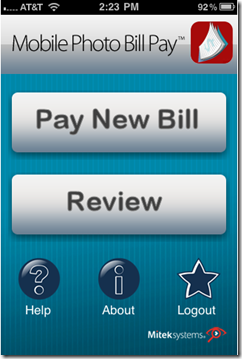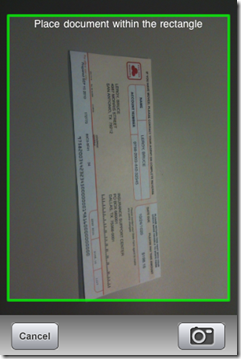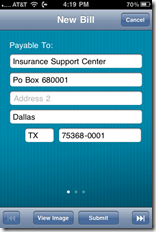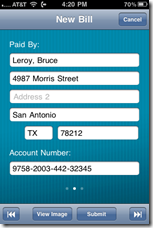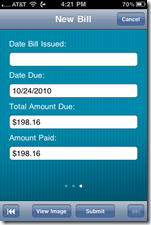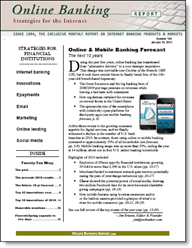 The latest Online Banking Report: 2011 to 2020 Online & Mobile Banking Forecast is now available. It was mailed over the weekend to all OBR subscribers. It’s also available online here. There’s no charge for current subscribers; others may download it immediately for US$495.
The latest Online Banking Report: 2011 to 2020 Online & Mobile Banking Forecast is now available. It was mailed over the weekend to all OBR subscribers. It’s also available online here. There’s no charge for current subscribers; others may download it immediately for US$495.
The report includes our latest 10-year online & mobile banking and bill-pay forecast. While our reading of the tea leaves is unlikely to be perfect, it seems clear that the demand for online banking in the United States has reached a plateau (note 1); in fact, we are likely within a year or two of online banking penetration peaking and slowly heading down.
How could that be? Mobile of course. In fact, through the end of 2020, we project an increase of 40 to 45 million U.S. households using mobile banking, to a total of nearly 60 million. During the same period, online banking penetration is actually expected to drop by a few million households.
If we are right, sometime near the end of the decade mobile banking will surpass online (note 2), although by then, the two will look pretty similar.
The report also includes a revised 10-year forecast for U.S. peer-to-peer lending. After more than doubling in 2010, we expect continued strong growth of around 40% compounded annually through 2020.
__________________________________________________________________
Top innovations & trends of 2010
__________________________________________________________
The report includes a summary of the top ten innovations or trends during the past year (in alphabetic order):
- In-statement merchant rewards goes from zero to 100 financial institutions
- Loan preapproval wizards reduce uncertainty for applicants
- Location-aware mobile services for banking debut
- Mobile banking goes mainstream
- Mobile capture removes the paper from commerce
- Mobile payments gains real momentum
- Online personal financial management (outside of the bank) struggles
- P2P lending solidifies its niche
- Social media proves it can have real impact in financial promotions
- Transaction streaming and sharing gain a foothold
__________________________________________________________________
New entrants on the list of the top 43 innovations of all time
__________________________________________________________________
Each year we rank the top online/mobile innovations of all time (North America). There are a total of 43 products listed from 42 unique companies:
- 15 banks
- 5 credit unions
- 9 non-bank financial services companies
- 13 technology companies
The class of 2010, which was unusual for being all technology companies rather than financial institutions (note 3):
- Blippy for its automated transaction-sharing network
- Cardlytics for its merchant-funded in-statement online rewards service
- Finsphere for its location-aware fraud-targeting service, PinPoint
- Mitek Systems for its mobile photo bill pay
————————-
Notes:
1. The penetration of online banking into U.S. households is relatively flat going forward. However, because each households accesses a larger number of financial accounts, growth at individual financial institutions is still growing on average.
2. Forecast is for the United States. Mobile has already surpassed all types of banking in some developing countries.
3. Perhaps this can be explained by the necessary focus of financial institutions on getting through the global banking crisis beginning in 2008.

